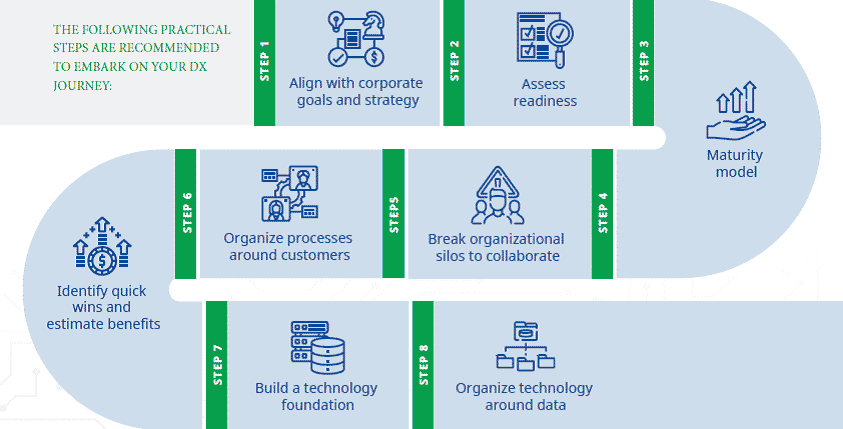Increasingly autonomous operation – I assume that we agree on this matter – will be the future in many parts of the process industry. But it’s also certain that this can’t be achieved overnight. Logically, this circumstance is reflected in the gradual approach towards autonomous operations, which Yokogawa also takes. All of us probably agree on that. But the question is how. Today, many companies still have issues realising this. Of course, there are now a number of mostly large companies making major progress and rolling out pilots across the board. But even they had several barriers to overcome beforehand. After all, autonomous operation of process plants cannot be considered in isolation. It has to be embedded into a comprehensive digital transformation strategy.
Status quo of individual transformation
There’s certain to be more than one correct approach to digital transformation. Similarly, the manifestations for each industry, each company even are very individual. But general steps have proven themselves to be useful in supporting companies on their path towards digital transformation.
The following questions aren’t so easy to answer in this context. Those referring to the targets of transformation, the current status and the gaps that urgently need to be closed. But also those questions as to which solutions even make sense, whether they will have a short-term or long-term effect or which skills employees need to implement them. Questions like these present companies at the start of their digital transformation with huge challenges. Let’s assume that management support and at least a general understanding of Industry 4.0 and incorporating digital transformation into the company strategy are givens, meaning the first step has been taken successfully. Then, maturity models can offer major support in answering the questions above. But later on, observing the status quo is still essential to be able to flexibly adapt existing strategies to changing circumstances.
How maturity models can provide support
We talked to Dr Violett Zeller, the Chairwoman of the VDI/VDE Division of Digital Transformation, discussing what exactly the maturity models are and how companies can find the models appropriate for them.
How do I find the model that’s right for me?
There is a wide range of maturity models, some of which are available for free on the Internet. Getting an overview and finding the right one for a company’s individual needs isn’t an easy task. As Dr Zeller explains in the interview, the guideline VDI/VDE 4000 helps businesses select an appropriate model. Here is a brief overview of the contents of the guideline, which is currently available as a draft. It is designed to guide decision-makers in selecting the right Industry 4.0 maturity model, so that you can determine your own maturity and use it as the foundation for creating a roadmap.
Part 1
introduces the topic, describes the selection criteria and model types and gives the reader basic advice to help them select as well as apply models.
Part 2
provides support in making a practical selection. Based on the available categorisation of the observed maturity models in terms of differentiated decision-making criteria and a question catalogue, the reader can identify the right model for them.
Part 3
discusses application of the approach selected in part 2 based on case studies. By way of example, it shows the decision-making process, model application and the resulting insights.
Maturity models are a valuable tool for identifying fields of action and structuring the path towards digital transformation. It should be clear which targets are achieved with digital transformation, such as sales growth, increased efficiency or reducing resources. In addition, some companies have begun to pursue sustainability targets. Digitalisation can help design company processes and develop products in a way that conserves resources.
Join us here on this blog to find out more about digital transformation issues in the process industry.
Next up, read about the path from industrial automation to industrial autonomy.





